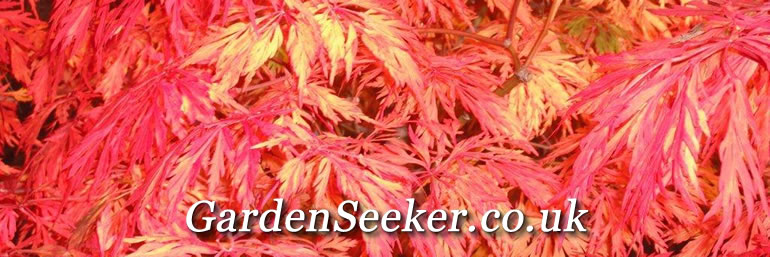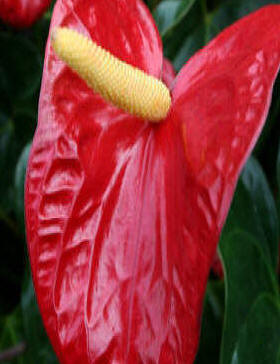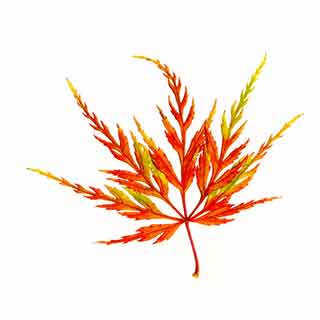

The Plant:
Anthuriums – There can be little doubt as to the origin of the common name of ‘Flamingo Flowers’. The bright pink/red ‘flowers’ say it all.
Anthuriums are normally epiphytic in their natural habitat – that is to say they do not grow in the ground as per the majority of plants, but are happy in the branch crotches of trees – taking their nutrient from the air, or partly from their anchorage roots delving into decaying debris. They do not feed on their host plant which is simply there to give support.
The natural habitat of the Flaming Flower is well shaded humid tropical forests – rain forests even.
 Other than the somewhat gaudy flowers, the Anthurium has large glossy
heart-shaped leaves which in themselves are attractive.
Other than the somewhat gaudy flowers, the Anthurium has large glossy
heart-shaped leaves which in themselves are attractive.
Anthuriums are best kept in shade or gloom. Pot them in a well-draining but richly organic (peat based) potting compost. This has to provide the food in the artificial environment of our households, for we are unlikely to emulate the densely humid conditions of a rainforest. It enjoys warmth and humidity, so both are necessary for good long term growth.
Artificially provided humidity such as with a sphagnum moss surround to the root area will help. It is one of the rare houseplants that actually respond to frequent misting or sprayings – but with lime free water. As long as the root zone is not allowed to dry out, the Anthurium does not need copious watering. But moisture levels surrounding the plant should be maintained.
Feeding of Anthuriums is also another area of failure, with pot grown plants. Anthuriums rarely need feeding, and at most just twice during the growing season, and then with a dilute general feed, applied in liquid form. Plant food tablets, spikes and the likes are no-go.
Over watering can cause failure, as can cold or draughty places. It needs a ‘still’ atmosphere for prolonged health.
Red spider mite can be a problem, and fist noticed with a general light silvery mottling of the leaves.
Mealy Bug manifests itself with white scale-like insects normally found firstly in the Leaf joints.
Scale insect, are small brown shell-like scales normally on underside of leaves, sucking away at the main vein area. They also leave a trail of sticky goo which then turns to black sooty mould.
In all the Anthuriums are great for brightening a dark corner, but you may have to give it a fair bit of care to keep it for more than a year! Larger species are popular for flower-arranging.
